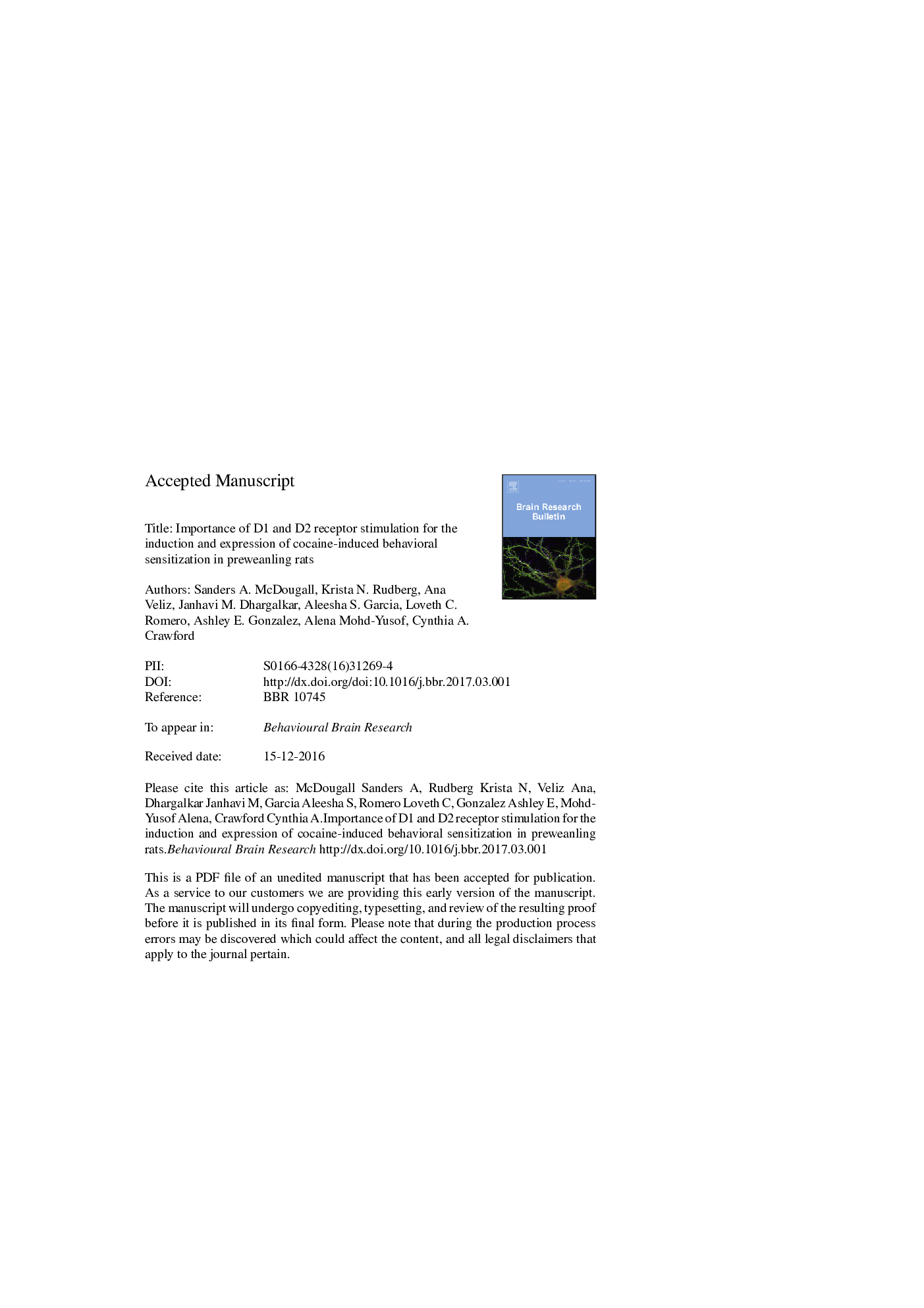| Article ID | Journal | Published Year | Pages | File Type |
|---|---|---|---|---|
| 5735557 | Behavioural Brain Research | 2017 | 44 Pages |
Abstract
The behavioral manifestations of psychostimulant-induced sensitization vary markedly between young and adult rats, suggesting that the neural mechanisms mediating this phenomenon differ across ontogeny. In this project we examined the importance of D1 and D2 receptors for the induction and expression of cocaine-induced behavioral sensitization during the preweanling period. In the behavioral experiments, rats were injected with reversible D1 and/or D2 antagonists (SCH23390 and/or raclopride) or an irreversible receptor antagonist (EEDQ) either before cocaine administration on the pretreatment day (induction) or before cocaine challenge on the test day (expression). In the EEDQ experiments, receptor specificity was assessed by using selective dopamine antagonists to protect D1 and/or D2 receptors from inactivation. Receptor binding assays showed that EEDQ caused substantial reductions in dorsal striatal D1 and D2 binding sites, while SCH23390 and raclopride fully protected D1 and D2 receptors from EEDQ-induced alkylation. Behavioral results showed that neither D1 nor D2 receptor stimulation was necessary for the induction of cocaine sensitization in preweanling rats. EEDQ disrupted the sensitization process, suggesting that another receptor type sensitive to EEDQ alkylation was necessary for the induction process. Expression of the sensitized response was prevented by an acute injection of a D1 receptor antagonist. The pattern of DA antagonist-induced effects described for preweanling rats is, with few exceptions, similar to what is observed when the same drugs are administered to adult rats. Thus, it appears that maturational changes in D1 and D2 receptor systems are not responsible for ontogenetic differences in the behavioral manifestation of cocaine sensitization.
Related Topics
Life Sciences
Neuroscience
Behavioral Neuroscience
Authors
Sanders A. McDougall, Krista N. Rudberg, Ana Veliz, Janhavi M. Dhargalkar, Aleesha S. Garcia, Loveth C. Romero, Ashley E. Gonzalez, Alena Mohd-Yusof, Cynthia A. Crawford,
